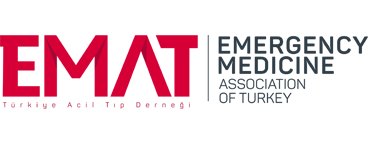The utility of monitoring end‑tidal carbon dioxide in emergency department to predict inhospital mortality of patients presenting with nontraumatic shock: A prospective observational study
Abhiraj R1 , Meera Ekka1
, Meera Ekka1 , Aravind Sreekumar1
, Aravind Sreekumar1 , Praveen Aggarwal1
, Praveen Aggarwal1 , Nayer Jamshed1
, Nayer Jamshed1 , Sanjeev Kumar Bhoi1
, Sanjeev Kumar Bhoi1 , Maroof Ahmed Khan2
, Maroof Ahmed Khan2
1Department of Emergency Medicine, All India Institute of Medical Sciences, New Delhi, India
2Department of Biostatistics, All India Institute of Medical Sciences, New Delhi, India
Keywords: Capnography, emergency department, inhospital mortality, shock
Abstract
OBJECTIVES: We aimed to identify the ability of end tidal carbon dioxide (EtCO2) to predict inhospital mortality of patients presenting to the emergency department (ED) with nontraumatic circulatory shock. We also attempted to assess the correlation between EtCO2 and other traditional vital signs and laboratory parameters in this patient population at different time points during their resuscitation.
METHODS: This was a single center prospective observational study conducted among patients with nontraumatic circulatory shock who presented to the ED of a tertiary care teaching institute in India. EtCO2 measurement was done using mainstream capnography in both intubated and nonintubated patients at presentation and at 120 min of resuscitation. Heart rate, systolic blood pressure, diastolic blood pressure, mean arterial pressure (MAP), respiratory rate, oxygen saturation, and laboratory parameters (lactate, base deficit [BD], and partial pressure of carbon dioxide) were measured at the same time points. All patients were followed up till hospital discharge.
RESULTS: One hundred and ten patients were recruited to the study. An EtCO2 of ≤ 23 mm Hg at presentation was 87% sensitive (95% CI: 73-95 %) and 43% specific (95% CI: 31-56 %) in predicting in-hospital mortality of patients presenting with no-traumatic circulatory shock in emergency department [area under curve (AUC): 0.735 (95% CI: 0.638-0.832, p<0.001)]. EtCO2 ≥23 mmHg at presentation had a significant predictive value on the risk of in hospital mortality with an adjusted odd’s ratio of 0.08 (95% CI: 0.02–0.3, P < 0.001). EtCO2 values at presentation and 120 min as well as the change between the time points showed statistically significant weak to moderate positive correlations with corresponding values of MAP and BD. Similarly, a significant negative correlation was demonstrated with lactate levels at the same time points.
CONCLUSION: EtCO2 values at presentation are an independent predictor of inhospital mortality of patients with circulatory shock of nontraumatic etiology presenting to the ED.
How to cite this article: Abhiraj R, Ekka M, Sreekumar A, Aggarwal P, Jamshed N, Bhoi SK, et al. The utility of monitoring end-tidal carbon dioxide in emergency department to predict inhospital mortality of patients presenting with nontraumatic shock: A prospective observational study. Turk J Emerg Med 2025;25:199-207.
The study protocol was reviewed and approved by the Institute Ethics Committee of All India Institute of Medical Sciences (AIIMS), Ansari Nagar, New Delhi, with approval no: IECPG‑554/23.09.2021.
AR: conceptualization, study design, data collection, and writing original articles. ME: supervision and study design. AS: interpretation of data and writing the original article. PA: supervision and revision of manuscript. NJ: supervision and revision of the manuscript. SB: supervision. MK: statistical analysis.
There are no conflicts of interest.
None.
We extend our sincere gratitude towards Dr. Sanith K R , Dr. Vaishnavi T and Dr. Anujith Mahendran for their support and guidance throughout the conduct of this study.

